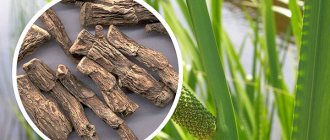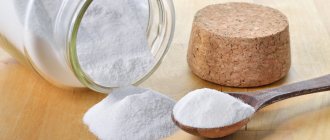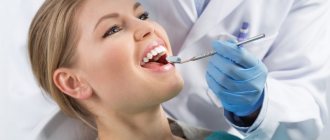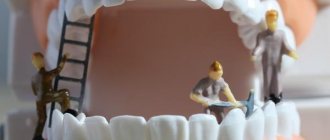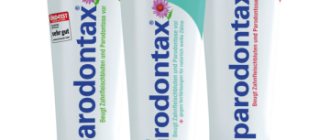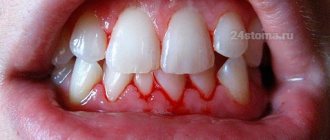Dentist
Do you want your smile to always shine with health? The dental department of the MediArt clinic offers a wide range of services for the treatment and restoration of teeth.
Using modern tools, dental treatment and restoration is easy, quick and painless.
Dentistry at the MediArt clinic in Moscow is equipped with first-class equipment and uses high-quality materials so that clients are always satisfied not only with the result, but also with the process.
Over 20 years of work, we have managed to assemble a reliable team of qualified, responsible, and caring dentists.
The specialists who provide inexpensive services are skilled and have extensive experience.
The benefits of honey
The composition of the bee product is rich in useful components. The vast majority of them are calcium. It is this component that is responsible for the strength of bones.
The phosphorus contained is suitable for whitening, and fluoride is the main protective agent against the destruction of hard dental tissues.
This product is also not deprived of useful vitamins:
- vitamin A. It is necessary for smooth tooth enamel and also helps eliminate bleeding gums.
- vitamin D. It helps absorb calcium and phosphorus.
- vitamin C. It is necessary for bone regeneration.
Diet and vitamins
Proper, balanced nutrition is necessary for gum health. To strengthen the mucous membranes and blood vessels, you need to eat foods high in vitamin C, such as citrus fruits and green leafy vegetables. Vitamin K, found in large quantities in green vegetables and herbs, has a similar effect. Antioxidants and tannins contained in green tea and red wine have an anti-inflammatory and healing effect, slowing down the aging process. In addition, it is important to consume enough phosphorus, calcium and zinc - they are contained in seafood, garlic and onions, and dairy products.
Vitamin complexes are well suited as an additional source of nutrients - in particular, the vitamin-mineral complex for teeth ASEPTA. It contains vitamins A, B3 and B6, C, D3, as well as coral calcium and green tea extract. In addition, coenzyme Q10, which is contained in the complex, has a powerful regenerating effect and restores damaged gum tissue.
How to protect your teeth?
To protect your mouth from dental diseases, you need to consume honey correctly. We bring to your attention a few rules:
- You should brush your teeth several times a day - morning and evening.
- After each meal, it is advisable to rinse your mouth with warm water.
- Throughout the day, you need to drink enough water so that saliva constantly washes the surface of the enamel.
- Your toothbrush needs to be changed every 3 months, otherwise bacteria will accumulate on the bristles.
Causes of disease not related to gum disease
Dental disease is not the only factor that causes loose teeth. This process can occur for a number of other reasons:
- As a result of genetic predisposition to the disease.
- Weakening of the immune system.
- Diabetes.
- Hormonal imbalances.
- Psoriasis.
- Trauma to the maxillofacial area.
- Arthritis.
Only a dentist can correctly determine the cause of the disease. If the teeth are loosened as a result of a strong blow, the doctor sends the patient for an x-ray for a more detailed diagnosis, and then decides on subsequent treatment. If the cause is a chronic disease, the doctor will prescribe dental procedures or prescribe the appropriate medication to strengthen the gums.
Rules for using honey for teeth
The benefits of honey for dental treatment have been proven by scientific medicine. To get the maximum benefit from the product, you must follow a number of simple rules:
- Do not allow honey to become too hot;
- It is not recommended to keep the honey product in direct sunlight.
- For storage it is best to use a dry and dark place. The ideal storage temperature is 5 to 10 degrees above zero.
- The dishes should be either wooden or glass.
- You should also avoid contact with metal.
Directions by car
Motorists have convenient free parking for the entire duration of their stay at the clinic. A special access parking system guarantees the availability of a free parking space for the clinic’s patients.
Clinic coordinates for planning a route by car 55.740117, 37.565865
For toothache
If a person has a severe toothache, then you can take honey and cinnamon in equal proportions, grind the mixture and apply it to the sore spot.
For fungal infections of the oral cavity, it is necessary to prepare a special “honey solution”; to prepare it, you need to take 100 grams of honey and 50 ml of water and put it on fire, and you must not forget to collect the foam. You should also add 50 grams of rose petals there. They should first be soaked in sugar water, boiled for another hour over low heat, removed and strained. This remedy helps with stomatitis, just store it in the refrigerator. In addition, this solution will also help with sore throat.
Medicinal chamomile has an antiseptic, antispasmodic, and anti-inflammatory effect. To prepare the solution you need to take 3 tbsp. l. chamomile flowers and 0.5 liters of boiling water. Pour water over the flowers and place in a water bath for 15 minutes. Afterwards you need to strain, cool and add a few tbsp. l. honey.
conclusions
Topical application of honey can change the pH, reduce the amount of bacteria in the mouth and inhibit bacterial growth. Regular consumption of natural honey can help prevent gingivitis and tooth decay.
Honey can be used as an alternative to traditional means of preventing caries and gingivitis.
In case of exacerbation of gingivitis or periodontitis, you should not self-medicate, since the use of herbal preparations requires long-term use. During this time, the disease can develop further and cause significant harm. Always contact your dentist if inflammation is detected. Treatment with propolis can be used additionally, but only if you do not have allergies and if your doctor has no objections.
From caries
Honey is very effective against tooth decay. Of course, it will not be possible to completely cure it with nectar alone. However, partial removal of tartar is guaranteed.
To achieve the desired result, you simply need to chew the honey in the combs or the honeycomb, which contains particles of other bee products.
The special composition of wax, as well as propolis, when taken regularly, noticeably cleans teeth of plaque. As a result, sensitivity in the gums goes away, and the likelihood of caries decreases.
Causes associated with dental diseases
The cause of loose teeth in the gums can be various dental diseases, such as periodontitis, periodontal disease, periodontitis and gingivitis. Incorrect bite can also trigger the appearance of this disease.
With gingivitis, many bacteria live in the oral cavity, which cause bleeding gums and, as a result, loosening of teeth.
With periodontitis, the same symptoms are present, but they are also accompanied by bad breath and inflammatory processes in the gums begin. The cause of both diseases is poor oral hygiene.
Periodontal disease is not associated with inflammatory processes and is accompanied by a decrease in the bone walls between all teeth, resulting in bleeding and itching in the gums, and the teeth become mobile and their sensitivity increases.
Periodontal disease
To prevent caries, improve the condition of teeth and treat periodontal disease, you can use honey, because... it contains a large number of microelements that are very important for our teeth. Let's look at recipes to combat periodontal disease. To prepare you need to take:
- 2 tsp. chopped salt;
- 2 tbsp. l. honey.
The prepared mixture must be rubbed into the gums twice a day. The duration of the procedure should be no more than 7 minutes. After the procedure, you should rinse your mouth with lightly salted water.
This is another option for preparing a honey-based mixture for periodontal disease. To prepare you need:
- 4 grams of cinnamon powder;
- 8 grams of rose petals;
- 8 grams of clove powder;
- 0.05 g nutmeg;
- 1 tsp. honey;
- 300 sage powder.
All components should be mixed and the contents should be applied to the affected area for 20 minutes. The procedure should be completed by rinsing your mouth with lightly salted water.
This recipe is based on propolis tincture (4%), which is applied to the surface of the tooth root. Lubrication can also be combined with internal administration of 35 drops of 10% alcoholic propolis extract.
When the gums are filled with pus, in other words - the appearance of gumboil, or to get rid of plaque on the teeth, you need to chew honey well in the honeycomb, it contains a large amount of vitamins and does not have a negative effect on the teeth.
Types and methods of dental prosthetics
- Installation of crowns and bridges made of metal ceramics, metal-free ceramics based on zirconium dioxide.
- Clasp dentures
- Prostheses with attachments
- Splinting prostheses
- Plate dentures
- Nylon and acrylic dentures
- Inlays (a small structure made in the laboratory that compensates for a defect in the hard tissues of the tooth and restores the anatomical shape, function and aesthetics)
- Veneers (thin plates covering the front surface of the tooth and restoring aesthetics)
The choice of type of prosthetics is made individually for each person, so mutual understanding between the dentist and his patient is extremely important here.
When it comes to dental prosthetics, there are a lot of nuances that must be taken into account. Only a well-treated and filled tooth can become a reliable support for bridges, crowns and other orthopedic structures for many years!
In our clinic, preparation for prosthetics and the manufacture of structures is carried out using the most modern and high-quality materials, with a full preliminary examination and the search for the optimal method of restoration for each specific case.
Come to us and we will be happy to solve your problems. You will see that your new teeth can be strong, durable, comfortable and very beautiful!
Stomatitis
Aloe in combination with honey gives very good results in the treatment of stomatitis. You can prepare an ointment at home.
To do this, you need to cut off a few aloe leaves, wrap them in a bandage or gauze, and put them on the bottom shelf in the refrigerator for a day. After a day, you need to squeeze the juice out of the plant. Add honey to it in a ratio of 1 to 2 and mix everything thoroughly. The product is ready for use.
The mixture should be applied to a cotton pad, which should be used to carefully treat dental ulcers. If the mixture is made for a child, then it is necessary to explain to him that he should not lick the wounds for 2-3 minutes. You can also make lotions. If the child can already rinse his mouth on his own, then prepare a solution: 2 tsp. dilute the mixture with 200 ml of warm water. The mixture must be used up to 5 times a day.
Toothpaste for strengthening gums
Therapeutic and prophylactic toothpastes are also an excellent tool for combating looseness of gingival tissue. Proper brushing of teeth is effective in itself - by massaging the gums with a brush, we improve blood circulation in the tissues and remove plaque, which is a constant source of infectious danger. In addition, many pastes contain antiseptic components that kill pathogens. However, it should be remembered that such pastes cannot be used for a long time, as this may negatively affect the state of the natural microflora of the teeth.
For regular use, pastes based on natural ingredients are better suited. For example, ASEPTA and ASEPTA Sensitive toothpastes contain extracts of calendula, sage, St. John's wort, sweet clover, calamus and other medicinal plants that relieve inflammation, eliminate bleeding and have a mild antiseptic effect. ASEPTA Sensitive paste also contains minerals - potassium citrate and hydroxyapatite, which increase the resistance of teeth to caries.
special instructions
To determine whether stomatitis can be treated with honey or not, it is first necessary to conduct a classic allergy test. To do this, apply a small amount of nectar to your hand. The optimal place is the inside of the elbow. If after half an hour no discomfort appears, then recipes with honey can be used.
When pure honey is applied to wounds, unpleasant sensations may appear, such as mild pain, burning or even itching. If you cannot tolerate this condition, then you should rinse your mouth with an antiseptic or a pure chamomile decoction. If the pain is unbearable, then these procedures should be abandoned.
Consumer Reviews
Kotty about Asepta adhesive gum balm (otzovik.com)
“I had to purchase this adhesive balm because the dentist diagnosed me with periodontal disease. Therefore, when I have gum inflammation, I use this drug in courses every 6 months. I must note that the drug very quickly exerts its healing effect on the gums. The pain goes away immediately after starting treatment.
The dentist recommended that I lubricate my gums at night, once a day for 7 days.
Having studied the composition, I saw there such a substance as metronidazole and chlorhexidine. I realized that metronidazole is still an antibiotic. But since I was prescribed this medicine, I was calm. Although, frequent use of substances such as chlorhexidine and metronidazole on the skin and mucous membranes is undesirable, because the protective properties that the mucous membrane and skin should produce may cease to be produced. The dentist told me this too. Therefore, it is very important to use such products only for their intended purpose and strictly according to the instructions.
Of the indicated effects of the balm on the gums, the following were indicated:
- pronounced antibacterial effect on the gums;
- relieving inflammation and bleeding gums;
- breath freshening.
The package also contained a special plastic spatula, which was used to apply the balm to the gums. I must say that it is very comfortable. The balm itself is very thick and hardens after application. But the taste is generally tolerable.
I am satisfied with the effect of the balm. Good quality. It's not that expensive, considering that it lasts a long time. I recommend".
Minuto4ka about Asepta mouthwash (otzovik.com)
“Mint is an acquired taste, in everything. For example, I can completely tolerate it and love it. But I know a lot of people who can’t stand tongue-biting additives.
These are the first associations that arose for me when I first used this mouthwash.
It is sweet and has a lime flavor. And absolutely non-biting.
They prescribed it to me for absolutely no reason, of course.
My dentist prescribed it for me. For gums, which really bother me due to the periodic eruption of wisdom teeth. Which I'm terrified of deleting.
The rinse aid is sold in pharmacies, I haven’t seen it in supermarkets, which captivates me. I would like to believe that it is truly therapeutic in nature. They prescribed me this mouthwash along with Asepta dental gel. I don’t know which of them helped in the end. Maybe all together.
I think the advantage of the bottle is the presence of a measuring cup. It is very comfortable. Not all mouthwashes have it...
... overall I recommend it. At least it will win over its audience with its taste.”
Sources:
- Study of the clinical effectiveness of the use of therapeutic and prophylactic agents of the ASEPTA series in the treatment of inflammatory periodontal diseases in children and adolescents (I.V. Klimova) Irina Vladimirovna Klimova, Candidate of Medical Sciences, Associate Professor of the Department of Pediatric Dentistry, Novosibirsk State Medical University. Department of Pediatric Dentistry, Novosibirsk State Medical University.
- Clinical studies of antisensitive toothpaste “Asepta Sensitive” (A.A. Leontyev, O.V. Kalinina, S.B. Ulitovsky) A.A. LEONTIEV, dentist O.V. KALININA, dentist S.B. ULITOVSKY, Doctor of Medical Sciences, Prof. Department of Therapeutic Dentistry, St. Petersburg State Medical University named after. acad. I.P. Pavlova
- Report on clinical trials to determine/confirm the preventive properties of commercially produced personal oral hygiene products: mouth rinse "ASEPTA PARODONTAL" - Solution for irrigator." Doctor of Medical Sciences Professor, Honored Doctor of the Russian Federation, Head. Department of Preventive Dentistry S.B. Ulitovsky, doctor-researcher A.A. Leontiev First St. Petersburg State Medical University named after academician I.P. Pavlova, Department of Preventive Dentistry.
- The role of anti-inflammatory rinse in the treatment of periodontal diseases (L.Yu. Orekhova, A.A. Leontyev, S.B. Ulitovsky) L.Yu. OREKHOVA, Doctor of Medical Sciences, Prof., Head of Department; A.A. LEONTIEV, dentist; S.B. ULITOVSKY, Doctor of Medical Sciences, Prof. Department of Therapeutic Dentistry of St. Petersburg State Medical University named after. acad. I. P. Pavlova
How long does general anesthesia last when visiting an anesthesiologist?
The duration of anesthesia depends entirely on the working hours of the dentist. We support medicated sleep only as long as needed to perform the dentist’s tasks. When the doctor finishes the treatment and there is no longer any need for anesthesia, awakening begins immediately, which usually lasts about 15-20 minutes. Our patients wake up together with their parents in the awakening room.
We also have a video in which we filmed the treatment process in medicated sleep. Look

